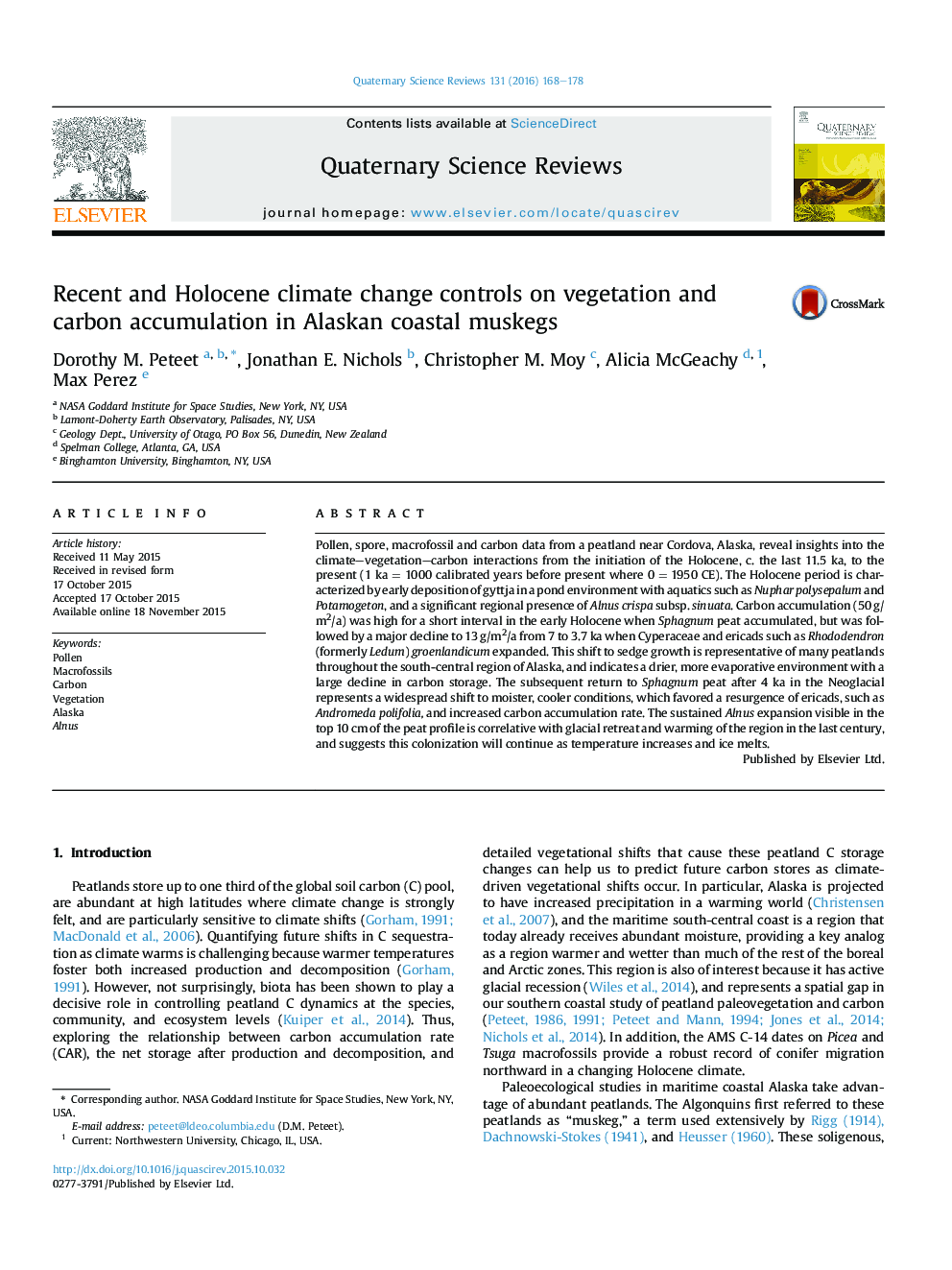| کد مقاله | کد نشریه | سال انتشار | مقاله انگلیسی | نسخه تمام متن |
|---|---|---|---|---|
| 4735759 | 1357977 | 2016 | 11 صفحه PDF | دانلود رایگان |
• Climate-driven vegetational change drives carbon storage in southeast Alaskan bogs.
• Early Holocene deglaciation leads to foundation species Alnus dominance.
• Sphagnum peat drives highest rates of carbon accumulation (50 g/m2/a).
• Mid-Holocene dry climate favors sedge and low carbon accumulation (13 g/m2/a).
• Last century of Alnus expansion signals glacial retreat with 2 °C warming.
Pollen, spore, macrofossil and carbon data from a peatland near Cordova, Alaska, reveal insights into the climate–vegetation–carbon interactions from the initiation of the Holocene, c. the last 11.5 ka, to the present (1 ka = 1000 calibrated years before present where 0 = 1950 CE). The Holocene period is characterized by early deposition of gyttja in a pond environment with aquatics such as Nuphar polysepalum and Potamogeton, and a significant regional presence of Alnus crispa subsp. sinuata. Carbon accumulation (50 g/m2/a) was high for a short interval in the early Holocene when Sphagnum peat accumulated, but was followed by a major decline to 13 g/m2/a from 7 to 3.7 ka when Cyperaceae and ericads such as Rhododendron (formerly Ledum) groenlandicum expanded. This shift to sedge growth is representative of many peatlands throughout the south-central region of Alaska, and indicates a drier, more evaporative environment with a large decline in carbon storage. The subsequent return to Sphagnum peat after 4 ka in the Neoglacial represents a widespread shift to moister, cooler conditions, which favored a resurgence of ericads, such as Andromeda polifolia, and increased carbon accumulation rate. The sustained Alnus expansion visible in the top 10 cm of the peat profile is correlative with glacial retreat and warming of the region in the last century, and suggests this colonization will continue as temperature increases and ice melts.
Journal: Quaternary Science Reviews - Volume 131, Part A, 1 January 2016, Pages 168–178
